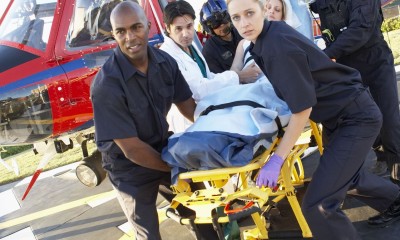
New Zealand was hit by a powerful 7.8 magnitude earthquake early Monday morning. The strength of the tremor caused a tsunami in the South Island, some 59 miles from Christchurch. Two hours later, the tsunami hit the northeastern coast. NZ officials said that the first waves are not very large but there is still a threat of tsunami activity for several more hours, as aftershocks still continue.
In the South Island, which is home to a little over one million people, residents have been warned to head for higher ground or inland and to stay away from the coast. The first waves measured by a gauge at Kaikoura reported that the first waves to arrive were around 8 feet 2 inches, or 2.5 meters. Waves have also started to arrive in other areas, as well as in Wellington.
NZ Civil Defense Ministry said that it is expected that Banks Peninsula (south of Christchurch) and Marlborough on the northeastern tip of the South Island will have high waves as high as 5 meters (16.4 feet). It’s the country’s largest wine region and known for its fine Sauvignon Blanc, as well as the Marlborough Sounds.
Chatham Islands residents also received warning to expect a tsunami wave. The Ministry warned residents to remain vigilant and stay safe, as the worst is not yet over. The entire east coast of New Zealand is still under threat and there are projections that waves between the height of 3 to 5 meters or higher are to be expected.
New Stats
Residents of New Zealand are used to earthquakes because the islands are located in the so-called “Pacific Ring of Fire.” Christchurch, with a population of about 340,000, which was hit by a powerful earthquake in 2011, is still recovering from the aftermath of that catastrophic event. The quake that hit Christchurch five years ago, which devastated its city center and historic area was only 6.1 in magnitude.
There were already early reports of injuries, casualties and property damage, but it is too early to get a full report.
Philip Duncan from Weather Watch New Zealand said that the tsunami wave that struck in the early morning was the highest he has seen in 38 years.
More Aftershocks
It is going to be a long night for the residents of the South Island. Residents and business owners have posted videos and images during the quakes and the powerful aftershocks. As of this writing, 45 aftershocks have been recorded. They showed wine bottles dropping from store shelves, grocery items dropping to the supermarket floors and homes and businesses with shattered windows, ceilings and more. Water sloshed back and forth in swimming pools.
One resident recalled that the quake started off as a small movement. But it immediately grew stronger and stuff in the house started falling down. When they got out, their swimming pool had lost plenty of water.
New Zealand’s Geonet and United States Geological Survey (USGS) reported that the South Island continues to receive aftershocks, some of them more the 6.0 in magnitude. Dunedin, the second-largest town in South Island has already called a state of emergency.
The USGS’s initial report said that the magnitude 7.4 quake was at a depth of 10 km. It was shallow and expected to cause serious damage. It was later revised to 7.8 with a depth of 14.2 miles or 23 km, meaning that there is more buffer between the earth’s surface and the epicenter. The depth makes the quake less destructive than previously expected, but still dangerous.
Officials warn that tsunami activity is expected to occur for hours.












Facebook
Twitter
Pinterest
Google+
LinkedIn
Email